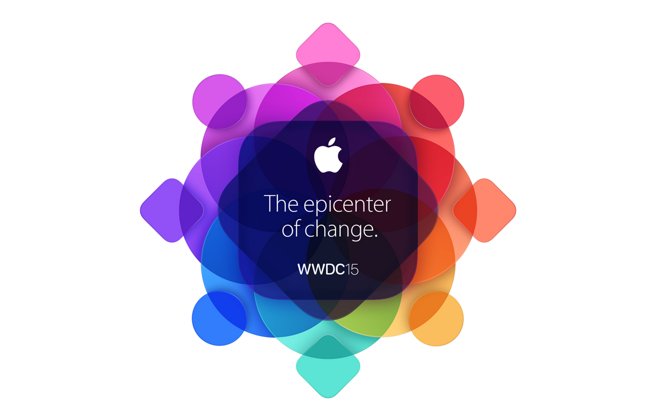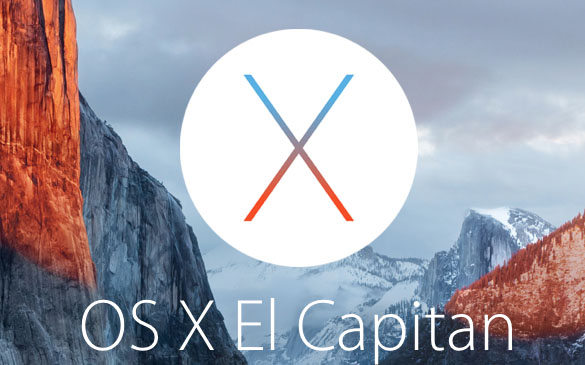
Apple wrapped up itsits Worldwide Developers Developer’s Conference keynote earlier today. If you missed the keynote and don’t want to watch the 2-hour presentation in its entirety, you can read our recap, which highlights all the major announcements of the event including iOS 9, OS X El Capitan, watch OS 2 and Apple Music.

OS X El Capitan
Apple started its string of announcements at WWDC 2015 by unveiling OS X El Capitan, which includes several new features and a handful of improvements to core OS apps and services such as Spotlight, Safari, Notes, Photos and others. The desktop OS ia available to to developers and will debut later this year for public download.
Improved Spotlight Search
OS X El Capitan adds a few refinements to OS X Spotlight search, which now includes a resizable window that can be moved around the display. Spotlight also is smarter, allowing you to use natural language to search for an item. It also pulls in additional information such as weather, sports, stocks, web video, and transit information.
Split View
Apple also added to OS X El Capitan is a new split-screen view for full-screen apps that will allow you to run two Mac apps side-by-side and share content between the windows. When you are done, you are one swipe away from your desktop.
Metal for Mac
To improve game performance, Apple introduced Metal for the Mac, bringing its graphics core technology to the OS X platform. Metal will allow the main processor and graphics processor to work together in a way that streamlines system performance. With this technology, system-level graphics rendering will see a 50 percent boost along with a 40 percent increase in efficiency.
Revamped Mission Control
In OS X El Capitan, Mission control makes it easier to find an open app with a new layout that arrange window previews in a single layer. No windows are stacked or hidden from view. You can even drag open windows between desktop spaces.
Mail Improvements
OS X Mail takes on an iOS feel with a new swipe feature that allows you to manage your mail just like you do on your iPhone. Just swipe right to mark an email as read or unread, or swipe left to delete. Also added to mail is a new suggested event and suggested contact feature that scans your incoming email and recommends changes, such as adding a new contact to your address book or a new event to your calendar.
Photos
Photos is the recipient of a handful of changes that’ll improve the overall usability of the app. Most notable is the addition of third-party editing tools via an iOS-like extension feature. When supported, you’ll be able to edit an image in Photos using your favorite image editing apps. Apple also tweaked the interface and workflow to make it easier to name people in faces, add locations to an image and more.
Notes
Similar to iOS 9, Notes on OS X El Capitan will now accept more than just text. You now can quickly create a checklist, add a photo or drop in a link to a website or map. An attachment browser makes it easy to view all the notes that include this extra content. All your notes and their included multimedia files are synced across all your iOS and OS X devices.
Maps with Transit
Also similar to iOS 9, Maps on the Mac now will include public information for select cities worldwide.
Safari
In OS X El Capitan, Safari gets a much needed AirPlay feature that allows you to stream video from the browser to your HDTV and a new Pinned Sites option that allows you to keep favorite sites open for later reading. There’s also a new “Mute All Tabs” option that can mute all browser audio, so you don’t have to hunt for the tab that’s the source of the noise you want to silence.
New International Support
Apple added new system fonts and improved both its keyboard and trackpad handwriting input methods to make it easier for Chinese and Japanese text.

iOS 9
In iOS 9, Apple announced changes that bring a new level of Intelligence to the OS, improvements to the core apps, exciting new iPad features and more.
Siri
As expected, Siri was overhauled with a new interface and new name, Proactive Assistant. This proactivity will be extended throughout the operating system, allowing for useful features such as the ability to learn your favorite workout songs and make recommendations the next time you go to the gym. Siri also gets an API that will allow third-party apps to utilize the voice assistant.
Apple Pay
Apple Pay in iOS 9 gets the highly-anticipated option to add Discover credit cards, store credit cards, debit cards and retail reward cards. Participating retailers now include Kohls, J.C. Penney, Walgreens, Dunkin Donuts and others. As part of the continued expansion go Apple Pay, the Passbook app which is the hub for Apple Pay, also is getting a name change and will be called Wallet to reflect its new monetary focus. In welcome news for those outside the US, Apple Pay will move beyond it US roots and land next month in the UK. Last but not least, Apple and Square will launch a new credit card reader specifically designed for the mobile payment service.
Notes app
Updates to the Notes app include a toolbar with new text formatting options that provide the ability to add rich text to a document. Users also will be able to create checklists within a note as well as add a photo from the camera or camera roll using a new image import option. There’s also a drawing tool for adding sketches to a note and a new share sheet extension that lets you send content, such as a website URL, from a third party app to a note. To help with organization, Apple added a new attachment browser that allows you to quickly find notes that contain an image, map or other attached content.
Apple Maps
As rumored, Apple added public transit information to the Maps app. Siri also will be able to tap into the transit maps feature allowing you to pull up transit directions using the Proactive assistant. These new transit maps will be available for limited cities worldwide.
News App
Apple introduced a new app to aggregate the news you want most. You can configure the sites you want to view as well as explore for new content via topics or direct search. Each article will include images, videos and other interactive content. Publishers on board include Conde Nast, ESPN and others. It will debut tin the US, UK and Australia.
iPad Improvements
iOS 9 will include new features for the iPad, including a new QuickType keyboard with support for shortcuts. As rumored, the iPad also will gain support for multi-tasking that allows both a split-screen and picture-in-picture view. Also new to both the iPad and iPhone is a new task switcher to make switching between apps easier.
CarPlay
In iOS 9, CarPlay is dropping the cord and going wireless, allowing users to connect automatically to their car’s audio equipment with no added hardware. Automobile manufacturers also will be able to create CarPlay apps to control car-specific features directly from the iPhone.
Other
Other performance enhancements and updates include improved power consumption, support for two-factor authentication and a reduction in the free space needed to install iOS 9. HealthKit and HomeKit also will be updated with HealthKit getting a new option to track water consumption, UV exposure and more.

watchOS 2
Apple also announced changes to the watchOS 2 that’ll add a new Nightstand mode, expand its Workouts app and improve upon its existing Watch Faces. The biggest change is the new support for native apps that will run directly on the Watch itself.
Timepiece Changes
Apple Watch is a timepiece with several customizable faces. In watchOS 2, Apple is adding beautiful new faces, including the Photo and Photo Album watch faces that pull images from your favorite photo album. There’s also the Time-Lapse watch face, which allows you to choose from a variety of time-lapse videos shot over a day in locations such as New York City, London or Shanghai. Developers also will be able to design their own Complications that can be included on the Watch faces.
Time Travel
Time Travel is a new Watch feature that works with the Digital Crown and allows users to scroll through upcoming events and other future data right from a Watch face.
Nightstand
The new Nightstand mode in watchOS 2 will automatically display the time and the next alarm when the Watch is charging. When an alarm sounds, the Digital Crown will act as a snooze button and the side button will turn off the alarm.
Native App Support
Native app support will make it possible for developers to create apps that can run and process data directly on the Apple Watch. Currently, Watch apps are an extension of an iPhone app and display data shared between the mobile and wrist-worn device.
Workout and Activity app
The Watch’s Workout app is getting more social in watchOS 2, with the option to share activity and workout achievements to social networks such as Facebook, Twitter and Messages. On the software side, developers of third-party fitness apps now will be able to share their data with the watchOS and contribute to the Move and Exercise goals. Also, Apple Watch owners will be able to use Siri to start a workout. using only voice commands.
HomeKit
Apple is adding HomeKit support to the Apple Watch in watchOS 2. Using this new capability, Apple Watch owners will be able to directly control lights and other HomeKit-compatible accessories through compatible Apple Watch apps.
Access to core hardware

Apple is allowing developers to build more robust apps that can access the core hardware of the Apple Watch, including the microphone, accelerometer, speaker, Taptic Engine, Digital Crown, and more.
Others
watchOS 2 also will bring updated Apple Maps with Transit information , an updated Apple pay app compatible with the new iOS 9 Wallet app, Siri with enhanced voice controls, Activation Lock and more.
Apple Music

Apple ended its WWDC keynote with Apple Music as its “one more thing.” Apple Music combines the best of Apple’s music services, including a streaming music service, a 24-hour live radio station and a social network that allows music fans to connect with their favorite artists. Apple Music will launch on June 30th with a 3-month free trial. After the trial period ends, customers can pay $9.99 for an individual account and $14.99 for a family plan that supports up to six family members.